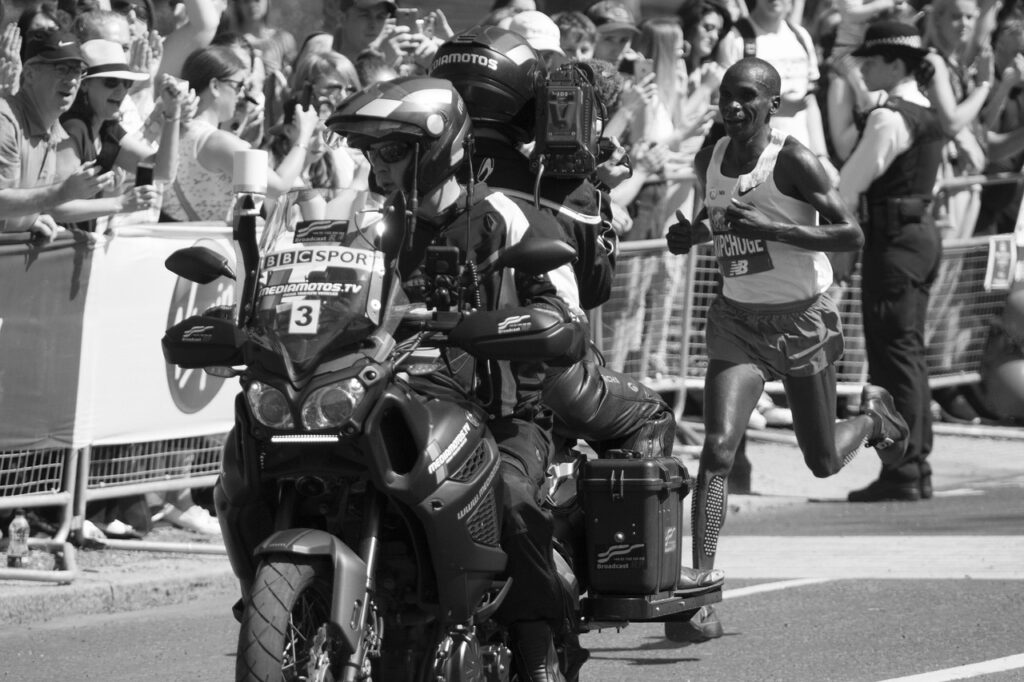Walk down any street, and you’ll see stories being told without a single word being spoken. A young professional proudly wearing their Safaricom branded T-shirt. A street vendor in their “Seng’eng’e ni Ngombe” cap. This is the art of storytelling through T-shirts in Nairobi. Each piece of clothing carries a narrative, a personal statement that goes beyond mere fashion choice.

More Than Just Fabric
Unlike billboards or advertisements that shout at passing crowds, T-shirts tell intimate stories. They’re not just part of someone’s wardrobe – they’re chosen statements, personal billboards that people willingly carry on their bodies. Each morning, when someone decides what to wear, they’re choosing which story to tell the world that day.
The Visual Language of T-shirts
The power of T-shirt storytelling lies in its elements:
– Bold typography that demands attention
– Carefully crafted graphics that capture imagination
– Colors that evoke specific emotions
– Messages that resonate with cultural understanding
Sometimes these stories speak in whispers, other times they shout declarations that their wearers might never verbally express. It’s this duality – the ability to be both subtle and bold – that makes T-shirts such powerful storytelling mediums.
T-shirts as Community Voices
For activists and community organizers, T-shirts become powerful tools of unity and protest. When voices need to be heard, a message worn across hundreds of chests creates an undeniable presence. These shirts become symbols of solidarity, turning individual statements into collective voices.
The Challenge of Authentic Storytelling
I glance down at my own shirt – a Robbie Levine Foundation piece from 2008. While it’s a perfectly good shirt, it doesn’t tell my story. It’s someone else’s narrative, someone else’s message. This realization highlights our need to tell our own stories, to wear our own narratives proudly across our chests.
Drawing from Our Cultural Well
The beauty of creating authentic T-shirt stories lies in our rich cultural heritage. We don’t need to invent new narratives – they’re already woven into:
– Our vibrant music scene
– Our distinctive cuisine
– Our dynamic political discourse
– Our iconic matatu culture
– Our unique urban language

“East Ndo Engine”: A Story in Three Words
Consider our “East Ndo Engine” T-shirt. To outsiders, it might seem like a simple phrase, but to Nairobians, it unfolds an entire narrative about life in the city’s eastlands. It speaks to:
– The economic divide between different parts of the city
– The resilience of East Nairobi’s residents
– The vital role the East plays in keeping Nairobi’s economy moving
– The pride of belonging to a community that powers the city
This shirt doesn’t just display words – it tells the story of Nairobi’s half-life, the tale of how the have-nots keep the engine of the city running through their daily hustle and determination.
The Power of Personal Expression
Each T-shirt has the potential to be a chapter in someone’s story. Whether it’s:
– A statement of professional pride
– A declaration of cultural identity
– A message of social protest
– A celebration of community
– A piece of personal history
conclusion
T-shirts are more than just clothing – they’re canvases for our stories, billboards for our beliefs, and bridges between communities. As we continue to develop this art form, we’re not just creating fashion; we’re documenting our culture, one shirt at a time.
Whether it’s through bold statements or subtle references, our T-shirts tell the world who we are, what we believe, and where we come from. In a world of mass-produced fashion, these personal stories become all the more precious – they become threads in the larger tapestry of our cultural narrative.